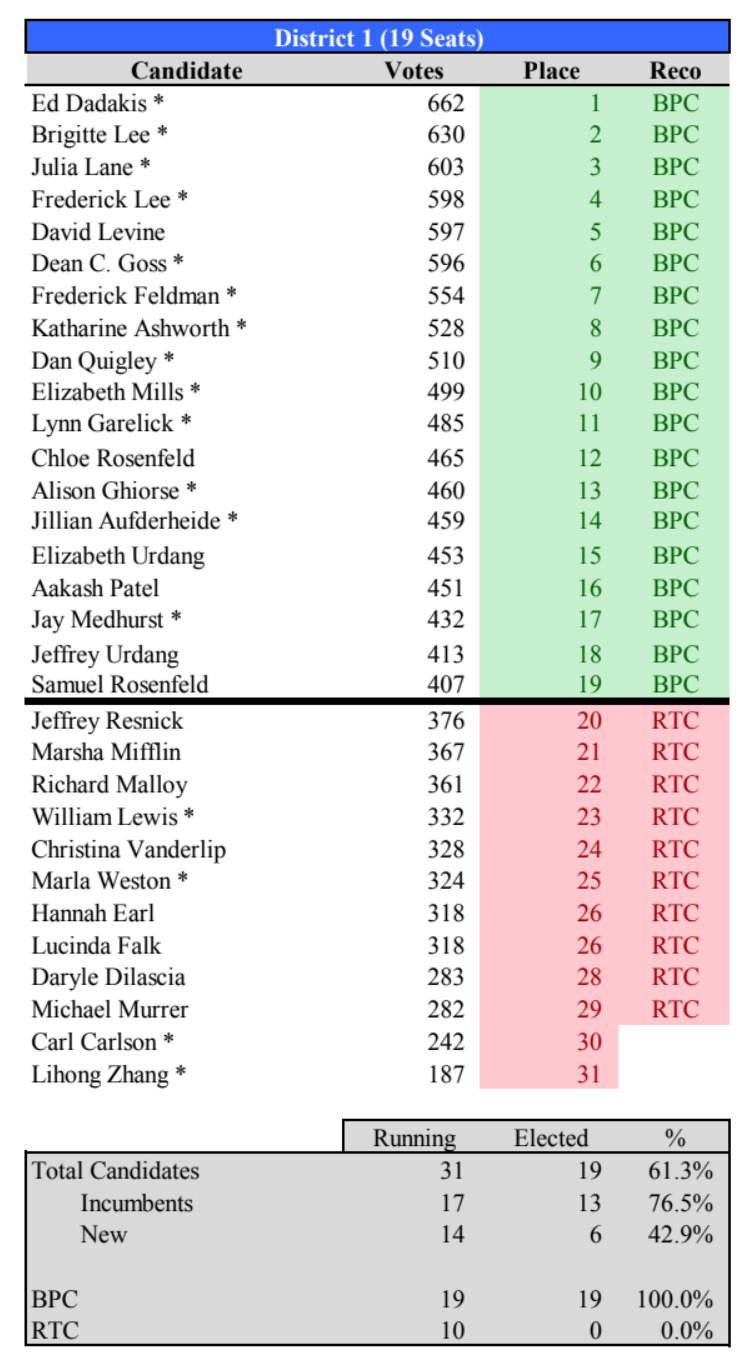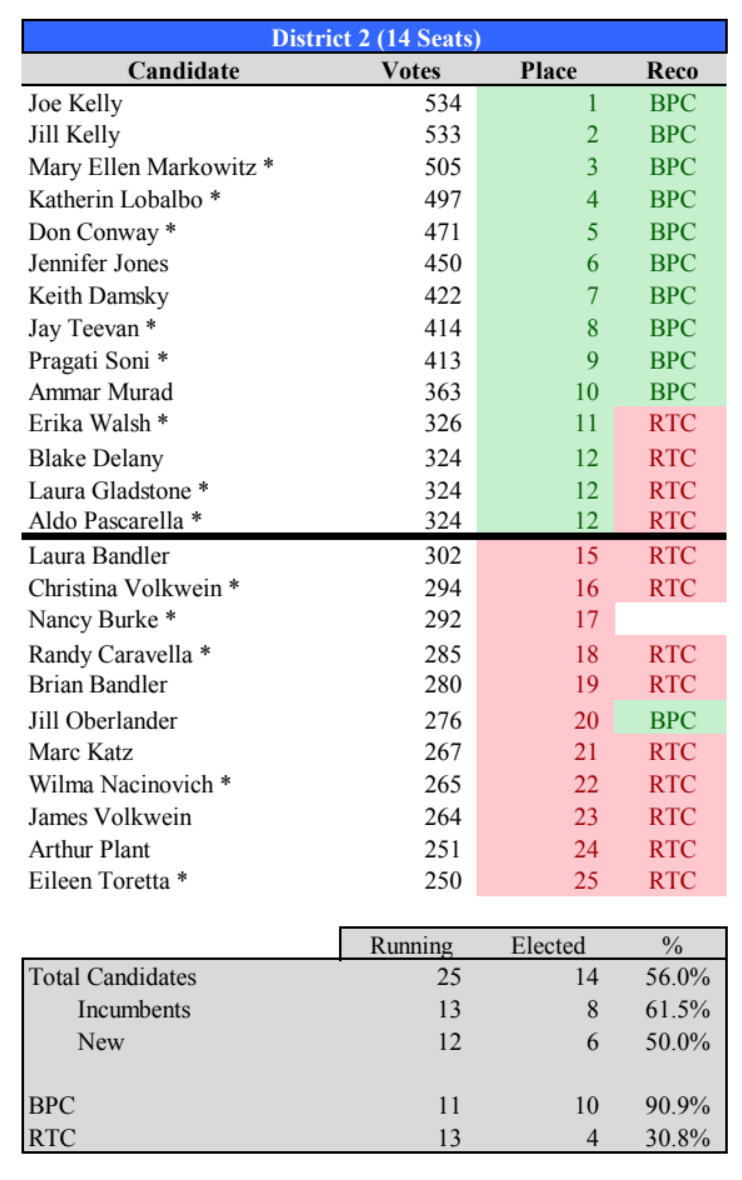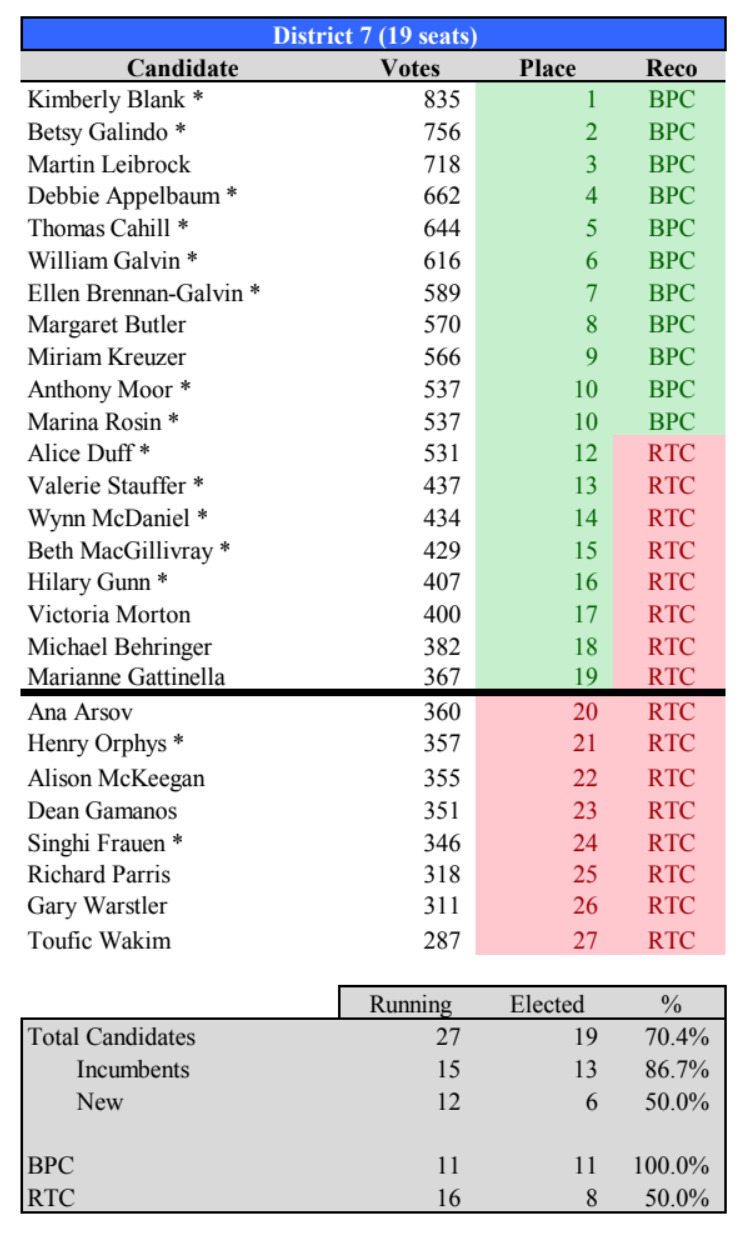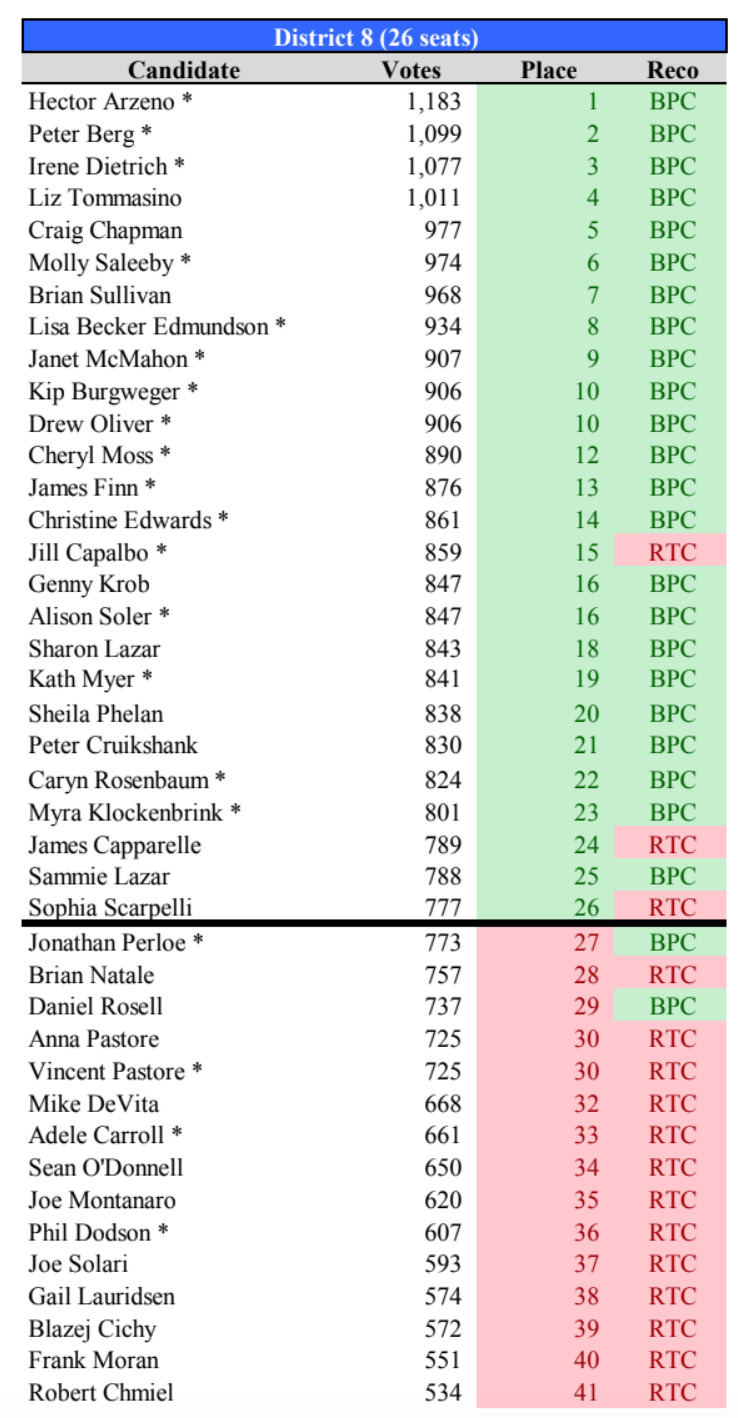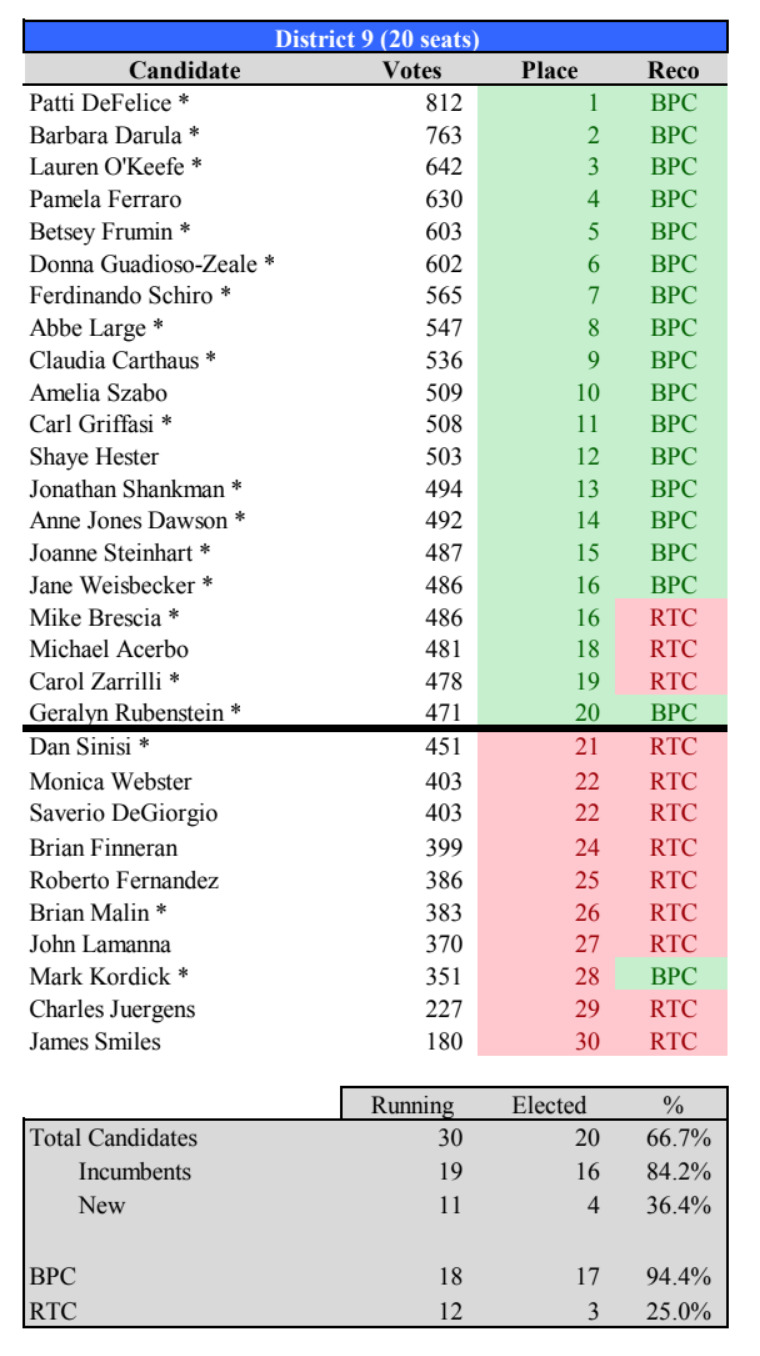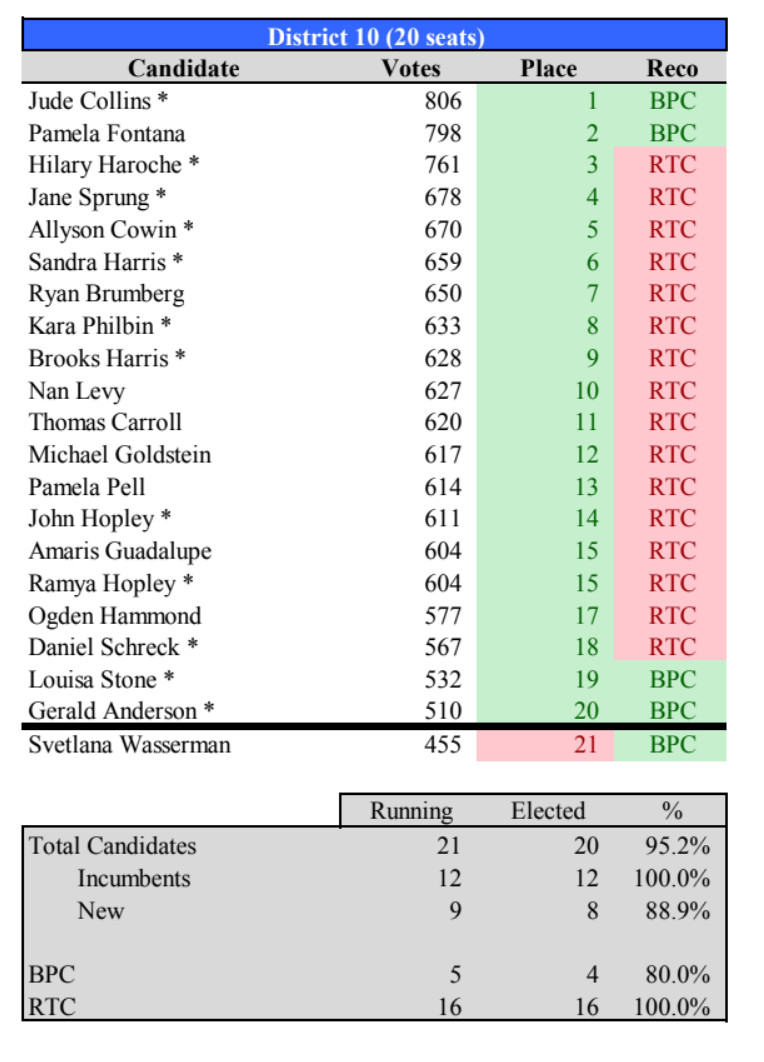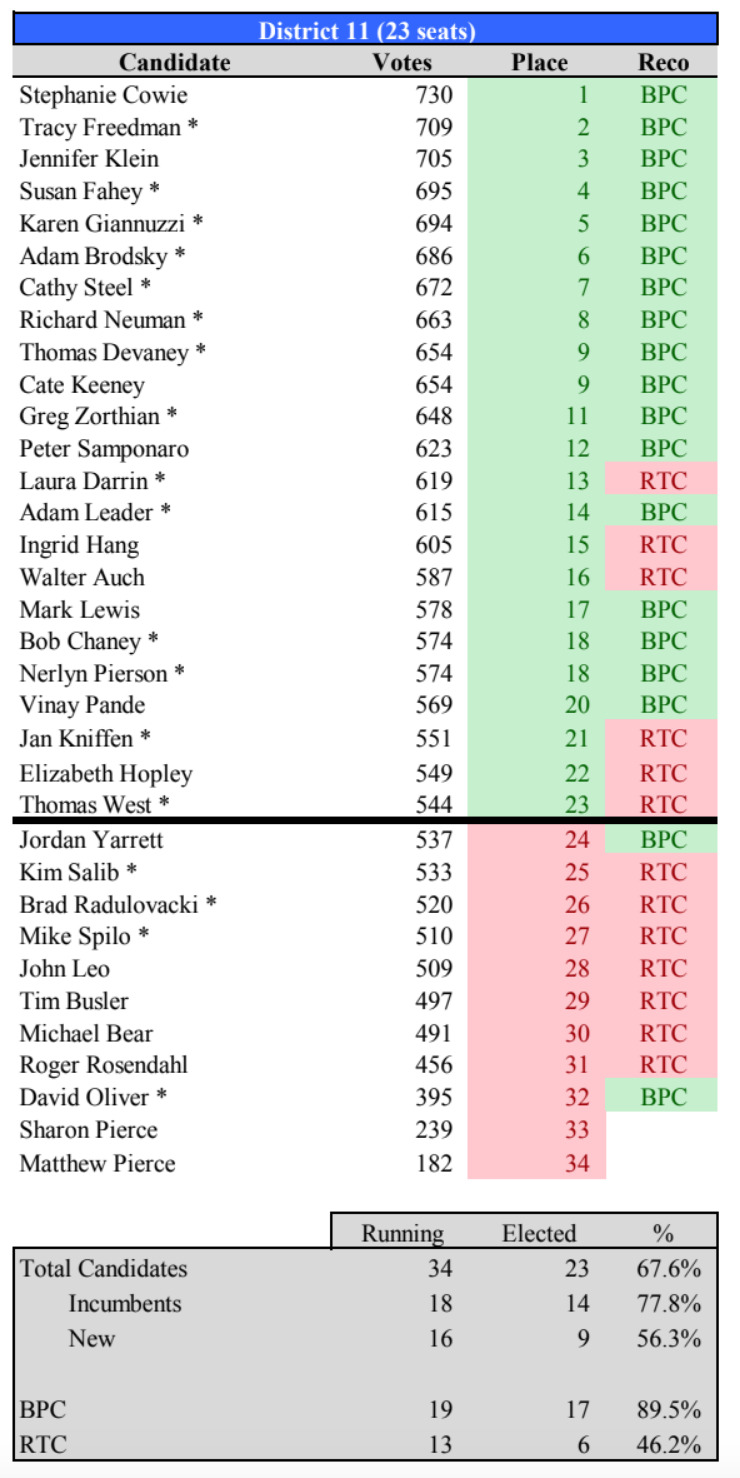 Update: Nov 15. Following a recanvassing of districts 4, 5, 6, 7, 8, 9, 11 and 12 on Monday, Nov 14, the town released the final Election Results for the RTM.
Update: Nov 15. Following a recanvassing of districts 4, 5, 6, 7, 8, 9, 11 and 12 on Monday, Nov 14, the town released the final Election Results for the RTM.
With the full municipal election results from the Nov 7 election available from the Greenwich Registrars of Voters, the Bi-Partisan coalition crunched the data to reveal a voting pattern in the RTM Races.
While there is a recanvassing of votes in RTM districts 4, 5, 6, 7, 8, 9, 11 and 12 scheduled for Monday, Nov 13 – automatically triggered in districts where votes were close – the overall result was a win for the moderates.
Leading up to the election, two slates circulated: one from the Bi-Partisan Coalition (BPC) and a second from the Republican Town Committee (RTC).
The green BPC slate circulated first. Then a red slate endorsed by the RTC, labeled “Bipartisan Coalition for Good Governance,” mimicked the BPC format and began circulating.
The night before the election an RTC email with the subject, “Don’t Stay Home Tomorrow” had a button “Here’s How I’m Voting” linking to the red slate.
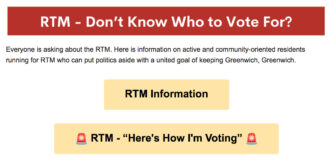 Who organized the Bi-Partisan Coalition (BPC)? James Waters, Dan Quigley and the Voting Moms, Jenna Lowe and Emily Goodman all worked together to come up with a bi-partisan list of candidates they recommended in each district.
Who organized the Bi-Partisan Coalition (BPC)? James Waters, Dan Quigley and the Voting Moms, Jenna Lowe and Emily Goodman all worked together to come up with a bi-partisan list of candidates they recommended in each district.
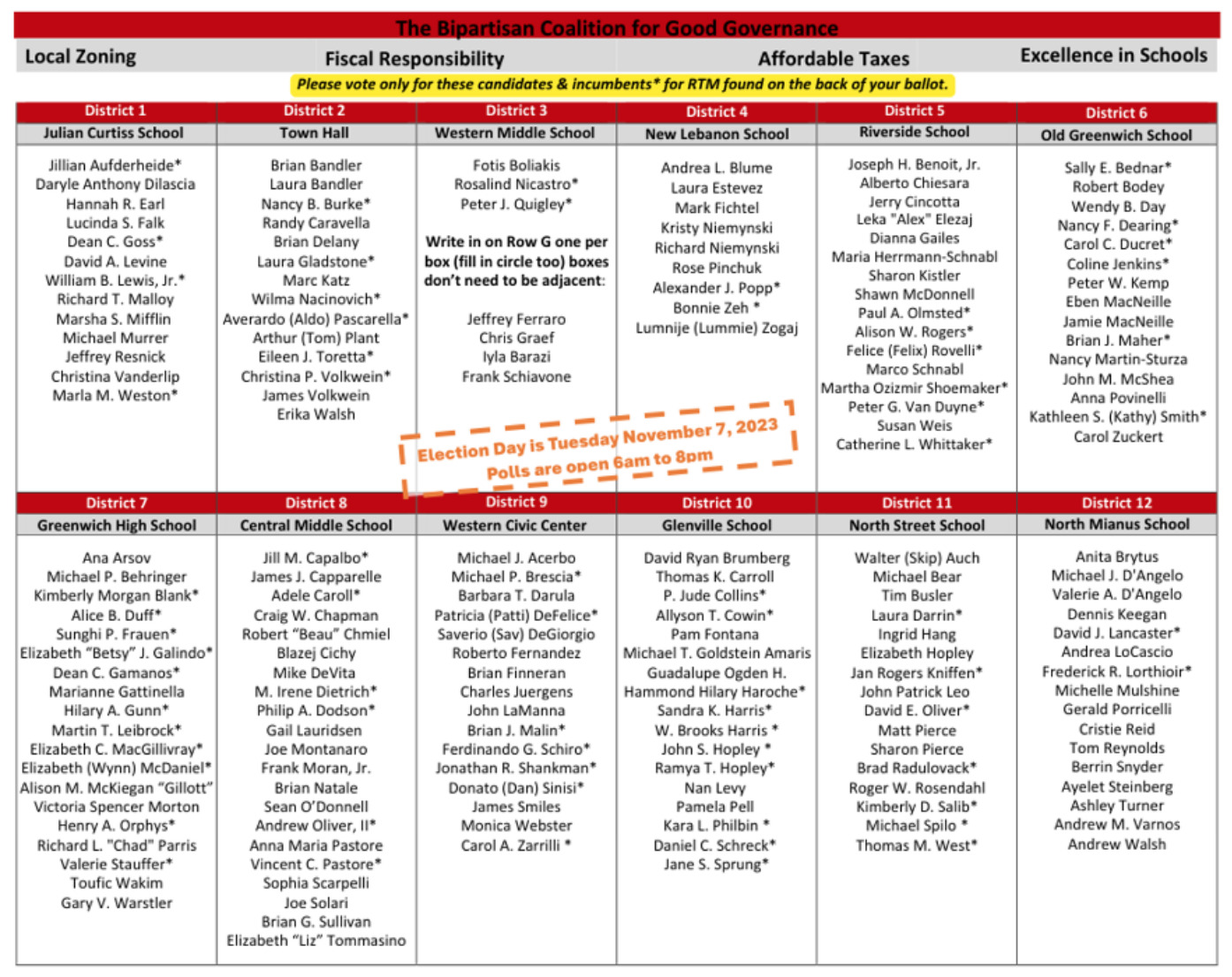
This is the list Ms LoCascio linked to in her Nov 1 letter.

This is the list that the RTC linked to in their “Don’t Stay Home Tomorrow” email where the link said, “Here’s How I’m Voting” Nov 6, 2023

The RTC justifiably takes credit for wins at the top of the ticket including the First Selectman, Tax Collector, Town Clerk and Republican Board of Estimate and Taxation candidates, which means Republicans will set the agenda on the finance board and retain their tie-breaking vote.
But the data shows their recommended slate of candidates for the RTM did not fare so well.
“Last night’s election was nothing short of unforgettable as Greenwich Republicans achieved a resounding victory, sweeping the board and making history as the minority party,” the RTC said in a statement on Nov 9 published in GFP.
Indeed, after a century as the majority party, today the Republicans are the minority party. That is true. But sweeping the board?
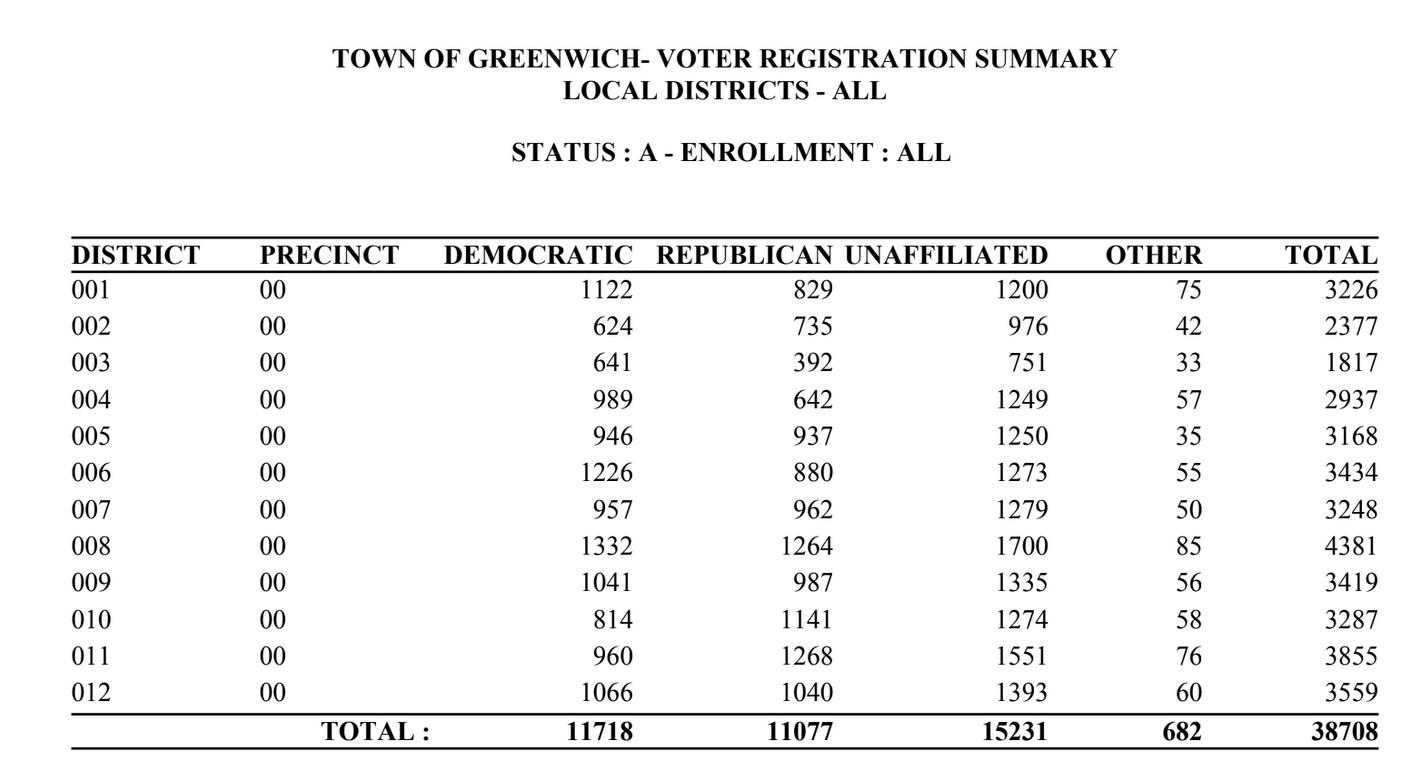
On Nov 8, RTC vice chair Joe Montanaro sent a statement to GFP saying, “A resounding victory for the Greenwich Republicans in the toughest municipal campaign in town history, especially given the electorate balance. A true testament to the leadership of the RTC and their ability to grow the party by way of a Common Sense message that fully resonates.”
In reality, Republicans became the minority party in Greenwich in 2020, so their victory as the minority party was not unprecedented.
In fact, in the municipal election in 2021 Republicans swept local races by significantly wider margins than last week’s results. First Selectman Fred Camillo saw his victory margin reduced from 34% to 18% while the Republican BET saw its margin shrink from 8% to 2%.
As for Montanaro, his own campaign for RTM in District 8 was unsuccessful. His 666 votes was not enough to win one of the 26 seats up for grabs.
Also in District 8, RTC Secretary Gail Lauridsen’s 574 votes weren’t enough either.
The RTC’s nominating committee chair Joe Solari failed to keep his seat in District 8 with his 593 votes.
The top vote-getter in District 8 was State Rep Hector Arzeno (D-151) with 1183 votes.
Overall Comparison of Slates
Of the 180 Bi-Partisan Coalition candidates, 168 were elected (93.3%).
Of the 158 RTC slate candidates, only 62 were elected (39%).
If you count up all the votes each candidate got, those who were supported by the Bi-Partisan Coalition had a total of 119,123 votes.
That breaks down to an average of 666 votes apiece. The RTC’s candidates got a total of 71,028 votes, which breaks down to an average of 450 each.

Looking at the Bi-Partisan slate, on average, each candidate got 48% more votes per person than the RTC candidates.
District after district, the Bi-Partisan coalition prevailed. With the exception of District 10 in back country, (north of the Merritt Parkway where most properties are zoned RA-4 four acres. )

What’s next?
According to Alexis Voulgaris, the RTM moderator, the timeline is as follows:
New members will be sworn in at the January 2024 full RTM meeting. (Term runs from January 2024-December 2025).
Districts elect new officers at their December organizational meetings. At the December district meetings the first part of the meeting focuses on taking up the items on the December Call (only current members participate in this part of the meeting). The second part of the meeting is the organizational meeting. Only members elected for the next term participate in this part of the meeting. At the organizational meeting districts will elect new officers and they will elect delegates/alternates for the standing committees.
Standing committees will elect their officers at the January committee meetings.
Reached by phone, Dan Quigley, who worked with Mr. Waters and the Voting Moms to create the Bi-Partisan Coalition slate, noted that some committee chair positions will be in play.
Lucia Jansen is now elected to the BET so the chairmanship of the Budget Overview Committee she ran for many years will be up for grabs.
Michael Spilo who chaired the Public Works Committee lost his seat in District 11 and a new chair will be selected for that committee.
Kim Salib, chair of the Transportation Committee, also lost her seat in District 11. A new chair of that committee will be selected.
Reflecting on the effort of the Bi-Partisan Coalition, Quigley said, “The RTC wanted people to believe that the candidates whose 130 petitions for RTM were candidates who ran independently of each other in an organic natural way, when in fact these candidates were recruited by the RTC and organized for the RTC for the express purpose of taking over the RTM to further their far right political strategy.”
He said the Bi-Partisan Coalition effort was in response to the large number of petition candidates arriving at town hall.
“It was not planned in advance and was not something any of us thought we would have to do. The only reason we did it was because the petition deadline gave us enough time to prepare a counter movement to defend the integrity of the RTM with bi-partisan candidates.”
Lastly Quigley noted that a handful of the candidates endorsed by the BPC were also endorsed by the RTC, including Ed Dadakis, Irene Dietrich, Fred Lee, David Levine and Dean Goss.
“We didn’t spend a penny,” Quigley noted.
The RTM has historically been bi-partisan, and in this election, with so many choices voters had to do extra homework.
This was facilitated when Aakash Patel helped create 203 Vote (https://203.vote/), a platform to track RTM voting statistics including how individual members voted: https://203.vote/measures).
District by district, the RTM candidates on the Bi-Partisan Coalition Slate were the winners. Below the charts are comprised of data directly from the Registrars of Voters as of Nov 9. An asterisk indicates incumbent status.
Green = Bi-Partisan Coalition (BPC) Slate
Red = Republican Town Committee (RTC) Slate
